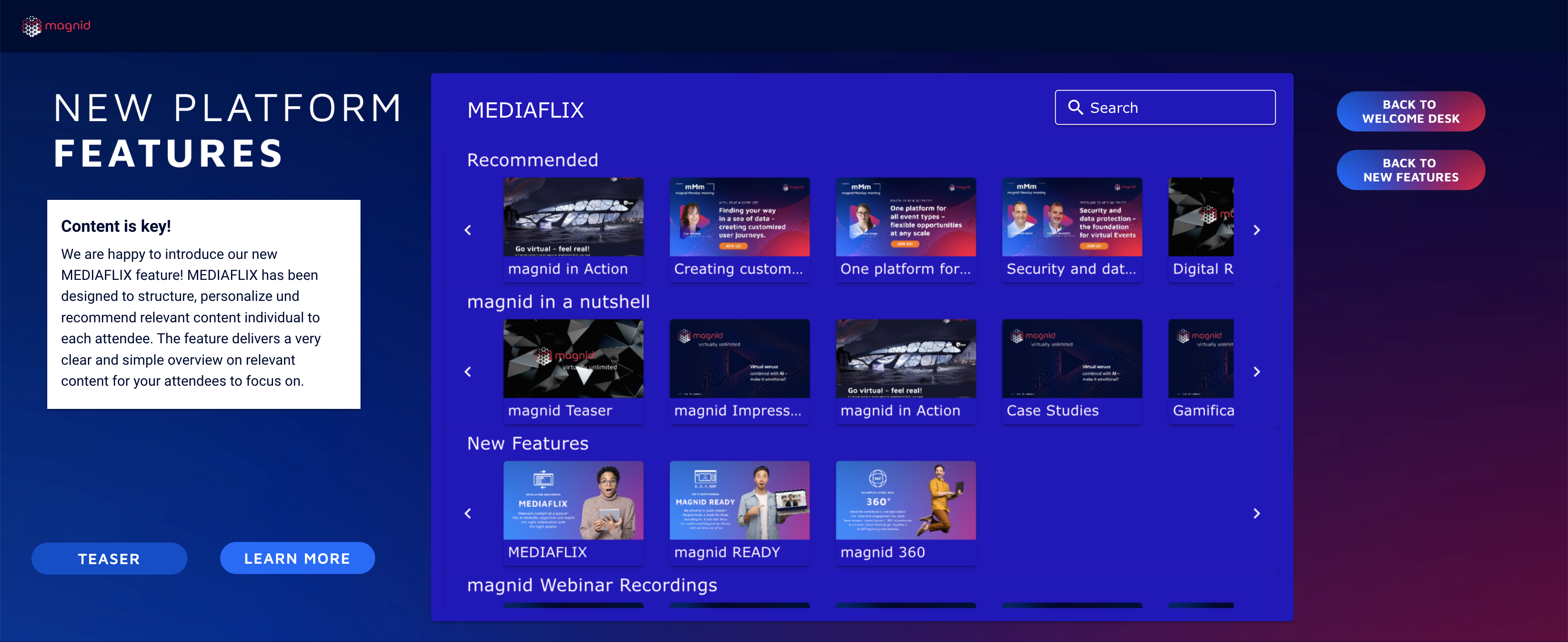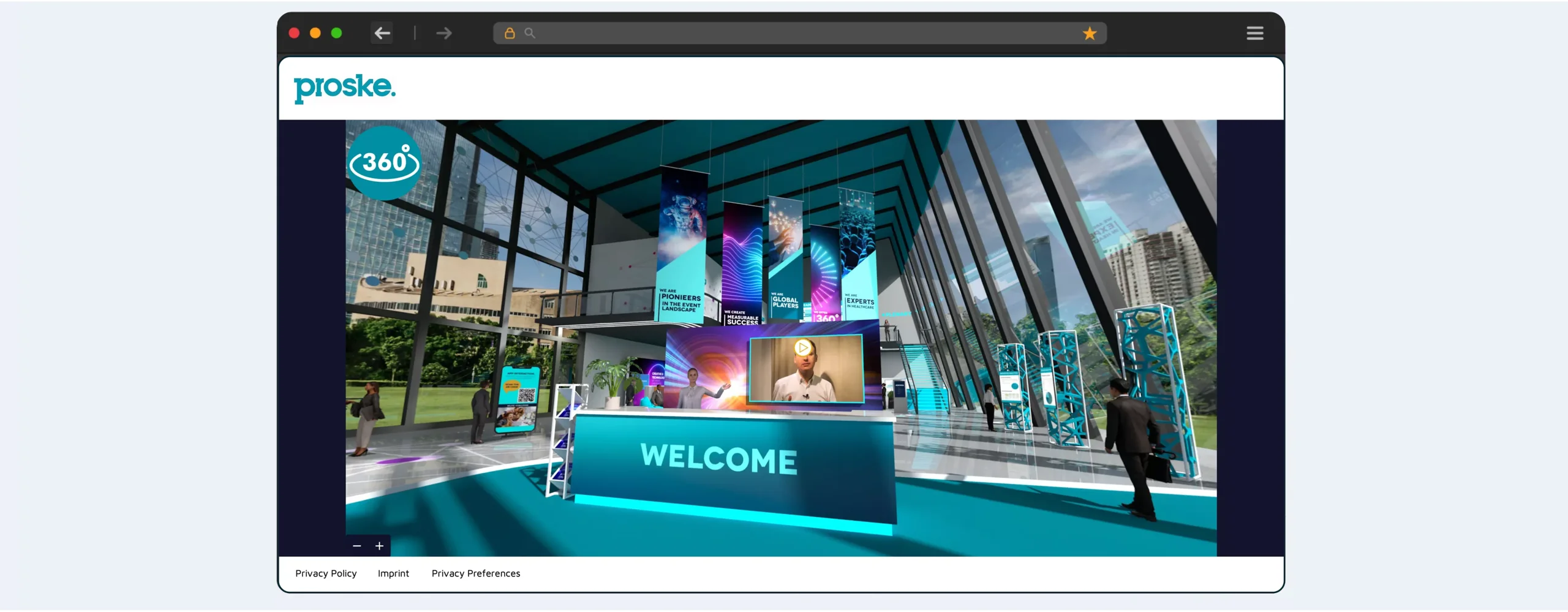
magnid by Proske receives the MarTech Breakthrough Award 2024
The event platform magnid by Proske was honored as a winner at the annual MarTech Breakthrough Awards.

Friday, July 19, 2024
In the media: tw-media.com
Reading time: 03:44 minutes
Digital twins are currently one of the hottest technology topics in the German economy. And, unlike some other short-term hype, quite rightly so. After all, digital twins have the potential to change, improve and ultimately even revolutionize processes in a wide range of application areas. This also includes events, trade fairs and conferences.
According to a study by the US market research company Gartner, half of all large companies in the world were already using digital twins in 2021. As virtual representations of real objects or processes, digital twins make it possible to plan and optimize events almost risk-free and cost-effectively by creating an additional layer for more effective event management.
In general, digital twins provide a major boost to sustainability – especially in the meetings industry. The virtualization of events rapidly reduces the CO2 footprint. Less travel is required and the consumption of physical materials, for example for setting up and equipping exhibition stands, is reduced. Sustainable reduction on the one hand, global expansion on the other: thanks to digital events and digital twins, global participation is possible without geographical restrictions. A positive consequence for many event and marketing managers in times of tight liquidity: the costs for logistics and travel are falling significantly.
There is no such thing as a single conference and trade fair audience today. Just as social classes and consumers are becoming increasingly segmented and individualized, this is also the case in the MICE industry. Target groups are becoming more diverse and at the same time expect to be able to access event highlights and important information “on demand” and at any time.
This is precisely where digital twins can play to their strengths: They help organizers to strategically align events and offer visitors the opportunity to use the information and offerings of virtual trade fairs or conferences in line with their needs. In this way, the information becomes accessible to all participants, including those who are unable to attend the event as planned or spontaneously. Ultimately, this is the only way to make events fully inclusive. Speakers can also participate remotely. This means that digital twins are not just limited to purely digital events, but are also an ideal tool for hybrid events where parts of the audience are live on site and others are connected digitally from more distant corners of the world.
“Digital twins offer visitors the opportunity to use the information and offerings of virtual trade fairs or conferences according to their needs.”
From the point of view of the conference organizers, the main advantage of using digital twins is the significant reduction in development time: thanks to a “mirrored” second (or even third or fourth) virtual environment, digital modeling and simulations can be planned and implemented much faster and more efficiently. The advantages of this process can also be seen in other sectors of the economy, such as the real estate industry for virtual tours, the healthcare sector for patient monitoring, industrial production for the construction of prototypes or in the education sector with the trend towards virtual classrooms.
The experiences of end users are crucial to the success of digital twins. They must experience added value – preferably an immersive one. “Immersive experiences” touch consumers or, in this case, event visitors in a variety of ways and not just in a one-dimensional, rational way.
Rather, they succeed in immersing people deeply in an experience. The use of virtual, augmented and extended reality makes this possible in a technologically smart way.
In the meetings industry, for example, this can already be seen in virtual and emotionally appealing showrooms where interested parties can interactively explore products and brands and view them in 3D. A real-time chat is then embedded directly into the exchange with the manufacturing companies. Another impressive example is 360-degree live broadcasts of conferences or concerts, where VR headsets give participants the feeling of being right there. Other examples include virtual product launches – brand presentations in digital twins of showrooms where participants can view and test products from all angles.
Of course, even with digital twins, sometimes the wish is still the father of the thought. In the area of education, there are still many hurdles to overcome through training, discussions and advice. This also applies to the generation gap: digital twins must not be a gimmick for visitors in their 20s or 25s. They must also consciously include and appeal to older people and thus become even more user-friendly.
But all of this is solvable and feasible. Ultimately, the path is clear: The meetings industry will become even more virtual. The twin transformation in particular is the key to the future: the combination of sustainability and digitalization makes the use of digital twins indispensable.
**This article has been translated into English. The original version has been published in TW Media in German on July 11th, 2024.
The event platform magnid by Proske was honored as a winner at the annual MarTech Breakthrough Awards.
In July, the entire Proske and magnid Team came together in Munich for a special summer get-together. Experience first-hand how we leveraged the magnid by Proske platform to create a memorable company event for the entire Proske and magnid family.
After many fields in industry, digital twins are conquering other areas of the German economy – above all the event scene. Nicole Deisenhofer, Director Strategy and Innovations at magnid, Proske’s digital platform, has observed this. In her guest article, she describes the strengths of virtual technology.
The event platform magnid by Proske was honored as a winner at the annual MarTech Breakthrough Awards.
In July, the entire Proske and magnid Team came together in Munich for a special summer get-together. Experience first-hand how we leveraged the magnid by Proske platform to create a memorable company event for the entire Proske and magnid family.
Experience the dynamic appeal of magnid by visiting one of our virtual demo environments.
Get a firsthand feel of our platform and discover the possibilities it offers to create virtual and sustainable experiences. Contact us now to have all your questions answered regarding technology, partners, and pricing options.
Start your journey today and bring your people closer together.

© 2024 Proske GmbH, All Rights Reserved.
© 2024 Proske GmbH, All Rights Reserved.